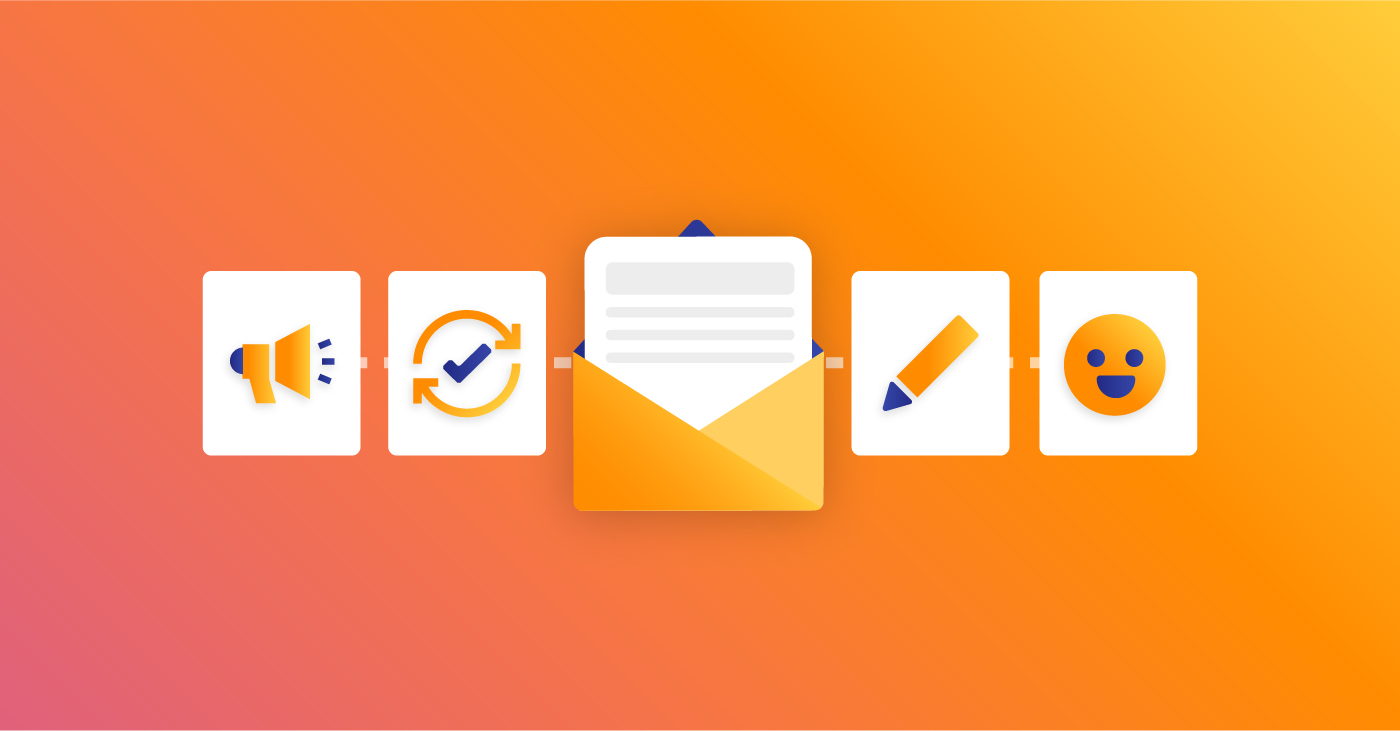Navigating Email Threats: How To Keep Your Marketing Team Safe
April 10, 2024 6 min read

A 2023 survey revealed that four in ten malicious emails received by global employees were response-based or credential theft attacks.
Response-based emails were 40.5 percent, while credential theft attacks were 58.2 percent.
Meanwhile, malware delivery accounted for 1.3 percent.
These figures underscore the prevalence of emails as channels for comprehensive data breaches.
Without resilient cybersecurity measures, these threats can significantly affect your organization, particularly the marketing team. Some attacks may even be challenging to spot instantly.
As such, this guide will provide tips to shield your email marketers from cyberattacks. We will also discuss the most frequent email threats to understand how they work.
Types of Workplace Email Threats
The types of email threats your company must be aware of include:
Virus and Malicious Software
Malware, or malicious software, is a program or code that harms computers, networks, and servers.
Viruses are malware types that self-replicate by inserting their codes into other programs.
These attacks work through the following methods:
- Malware: Hackers often use various channels to access systems.
- Viruses: They are usually dormant until you activate the attack, either by downloading corrupt files, opening infected applications, or clicking malicious links.
Emails are among the most common channels for these attacks because hackers can embed links or attachments, such as ransomware, spyware, and trojans.
Malware attack outcomes depend on its type. For example, ransomware aims to receive payment in exchange for system restoration.
Meanwhile, viruses disrupt your operations and may incur costly restoration. Hackers don’t profit from these attacks unless they’re part of a ransomware scheme.
Phishing Attacks
In phishing attacks, hackers pose as reputable entities through emails, forcing fear or a sense of urgency to reveal sensitive information and open infected links or attachments.
Besides emails, other phishing methods include:
- Spear Phishing or Whaling: Scams aimed at authorities, celebrities, and executives
- Voice Phishing: Automated recorded messages through phone calls
- Spam Phishing: Widespread attacks aiming to lure unsuspecting victims. Hackers can also use emails for this.
- Angler Phishing: Hijacking of social media messages by impersonating a trusted brand’s customer service
- SMS Phishing: Text messages with shortened fraudulent links
- Search Engine Phishing: Links pointing to malicious sites at the top of search results, which could be paid ads or deceptive optimization methods
Social Engineering Attacks
Social engineering attacks are emotional-based breaches aiming to psychologically manipulate you into making security mistakes.
Phishing is a type of social engineering breach. Other forms include:
- Pretexting: Hackers use counterfeit stories, called “pretexts,” to gain your trust. They will convince you to allow them access to a system or share confidential information by impersonating co-workers and other authorities.
- Baiting: This social engineering attack relies on your greed or curiosity. Hackers will use physical media to entice you into picking up an infected valuable item. For example, they will leave baits like virus-infected flash drives in elevators, bathrooms, or parking lots to pique unsuspecting victims’ interest. Hackers can even digitally bait you into clicking or downloading corrupted attachments via emails.
- Scareware: Attackers use emails to distribute this malware attack, tricking you into buying or downloading malicious software. This scam also appears as popup ads saying your computer has detected a virus or security issues.
Business Email Compromise (BEC)
BEC is part of a whaling scheme. This scam uses emails to trick you into sending money or disclosing company information.
Culprits pose as trusted partners, organizations, or individuals, targeting specific people within your company, such as:
- Executives and team leaders
- HR managers
- Finance staff
- New or entry-level employees
Most people don’t immediately recognize BEC because the emails don’t contain malware, links, and attachments. Also, these attacks are highly personalized to the intended victims.
Tips for Protecting Your Email Marketers from Email Threats
Here’s how to recognize and prevent email breaches to protect your email marketers:
Use Strong Passwords and Enable Multi-Factor Authentication
Strong passwords are the most common security action to safeguard your company accounts and devices. These codes contain at least eight characters, numbers, special symbols, and uppercase and lowercase letters, making them challenging to predict.
The things to avoid when making passwords include:
- Using weak and predictable information like birthdays, “12345,” or “abcd”
- Reusing similar passwords for multiple accounts
Remember to periodically change passwords, preferably every 90 days, to secure your accounts in case hackers find the old ones.
Then, enable multi-factor authentication for additional protection. This verification mechanism uses multiple login methods, such as biometrics and one-time passwords (OTPs), to ensure exclusive and authorized access.
Avoid Opening Suspicious Email Links
It’s best not to respond to emails from unknown senders. Even if you know them and are skeptical, cross-check with co-workers or concerned departments to confirm if they sent the emails.
Remember that attackers spoof emails to make them look like they came from co-workers or company departments. Double-check, don’t click links or attachments, and never respond.
Regularly Update Your Security and Operating Systems
Outdated operating and security systems can compromise your company devices. Hackers can find security loopholes to access your accounts, data, and applications, making it easy to acquire company info.
As such, regularly update your systems to keep your devices secure. These updates provide enhancements that address security vulnerabilities within your computers. They can even fix performance bugs to improve device stability.
Once updates are available, your providers typically put them on their websites. Your devices will also notify you. Install them immediately or enable automatic updates.
Sometimes, vendors discontinue support and updates for programs (known as end-of-life software (EOL)). Continued use of these solutions can result in compatibility issues, decreased performance, and breach exposure.
Thus, it’s best to retire all your EOL applications.
Install Industry-Recognized Antivirus Software and VPN
Antivirus software detects and blocks many viruses before they can infect your devices. It scans your files and computer memory for patterns indicating malicious software presence.
After installing and setting up, you can configure automatic scans. This automation helps you avoid forgetting to scan manually.
When the solution finds a breach, it will generate a dialog box and ask you to remove the file. In many cases, the software can delete the malware without asking you.
Choosing an industry-recognized antivirus is ideal. However, you must still familiarize yourself with the features to know what to expect.
You should also install a virtual private network or VPN.
VPNs encrypt the connections between devices and networks. They conceal IP addresses to hide browsing histories, transactions, and locations from third parties.
Integrate a VPN into your cyber-defense mechanisms to bolster email security across devices. Providers like IPVanish offer a Windows VPN with robust encryption and industry-leading speeds for Windows devices, which are also compatible with other operating systems like Linux.
Keep Your Email Spam Filters High
Email gateways have spam filters. To find yours, navigate your settings and turn them on. Setting the filter level to high is ideal to maximize security.
Here’s how to do it on Gmail:
- Ensure you’re signed in to an administrator account.
- Go to Menu and then Apps.
- Go to Google Workspace > Gmail > Spam, Phishing, and Malware.
- Pick an organizational unit on the left.
- Scroll to Spam and tap Configure or Add another rule.
- Enter a unique setting name in the add box.
- Select a spam filtering option like “Be more aggressive.”
- Click Save and verify that the new setting is live.
Remember that aggressive filters can unintentionally flag legitimate emails as spam, so periodically review your spam folder to bring them to your inbox.
Choose Highly Secure Email Marketing Solutions
Email marketing solutions are not identical. With many options in the market, it can be easy to choose an unsafe one.
To choose a secure software solution, like Benchmark Email, here’s what to consider:
- Data encryption
- Compliance standards
- Reviews, case studies, and testimonials
- Multi-factor authentication
- Secure API integrations
Train Your Staff About Cybersecurity
The IT department shouldn’t be the only team that understands cyber threats. You should train all your staff on cybersecurity so they can recognize and prevent email breaches.
You can also foster a cyber-resilient culture by sharing online articles about email security. These resources help ensure your teams are informed about the current trends, particularly on the sophistication of cybercrimes through artificial intelligence (AI).
Safeguard Your Business Assets
Staying vigilant is crucial amidst the escalating complexity of cybercrimes through emails.
Your cyber-defense mechanisms must have multi-faceted strategies beyond conventional measures.
Also, you should integrate continuous cybersecurity education into your organization’s routine to safeguard your assets efficiently and proactively. This way, your team can recognize and respond to emerging threats effectively.







